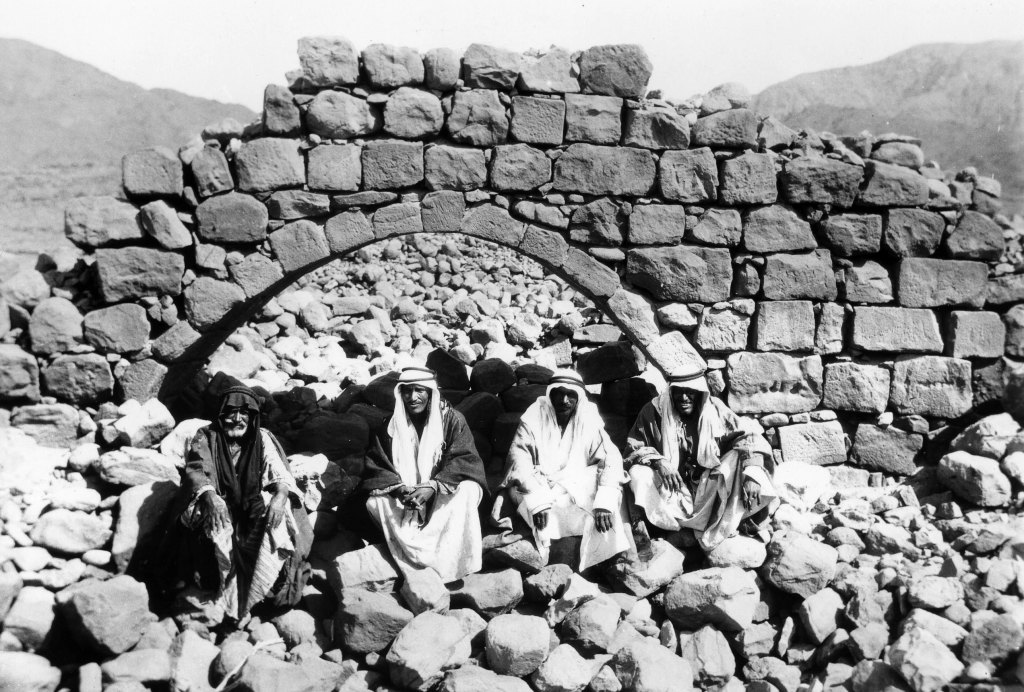Who is Nelson Glueck?
Nelson Glueck was born in Cincinnati, OH in 1900. He entered Hebrew Union College at 14, and earned a Bachelor of Hebrew Literature in 1918. Glueck went on to earn a B.A. from the University of Cincinnati in 1920. In 1923, he was ordained a rabbi at Hebrew Union College. He earned a Ph.D. from the University of Jena in 1927. In 1931, Glueck married Helen Ranschoff Iglauer, a noted hematologist. They had one son, Charles. Shortly after receiving his Ph.D., Glueck traveled to Jerusalem to study under William F. Albright at the American Schools of Oriental Research’s Jerusalem School. Glueck later served as director of ASOR from 1936–1940. In 1936, Glueck began teaching at Hebrew Union College. He was appointed president of the college in 1947, and, for the next two decades, divided his time between field research and his administrative duties at the college. From 1932–1947, Glueck systematically mapped Transjordan, identifying over 1,000 archaeological sites. In the early 1950s, he began mapping the Negev desert, discovering hundreds of pre-Byzantine sites. During World War II, Glueck contributed to the war effort by offering his intimate knowledge of Near and Middle Eastern geography to the Office of Strategic Services, a predecessor of the CIA.

Glueck authored several books including Explorations in Eastern Palestine (1940), The Other Side of the Jordan (1940), The River Jordan (1946), Rivers in the Desert: A History of the Negev (1956), and Dolphins and Deities: The Story of the Nabataeans (1965)
Nelson Glueck was one of the first Jewish American researchers to work in the Middle East. Glueck’s background as a Reform rabbi with a Ph.D. in Old Testament and Near Eastern Studies at the University of Jena, combined with his career as a well-respected archaeologist, make him a unique figure in the history of archaeology. Glueck conducted extremely important archaeological work in what is now Israel and Jordan at a time when the vast majority of American archaeologists came from Protestant backgrounds, and when Jewish archaeologists in British Palestine were just beginning to excavate.
Glueck’s biographers write, “By 1950, Nelson Glueck, born in 1900 to a struggling immigrant Jewish family in Cincinnati, had excavated remains of the civilization of the ancient Nabataeans in Transjordan, described in detail a biblical copper-mining industry at the shore of the Red Sea, and shown how the Negev could actually support a large population if proper irrigation techniques were used.” Glueck’s life and career were rich in adventure and discoveries that have shaped the path of archaeology. While Glueck researched the ancient peoples of the Middle East, he also actively engaged with the people and politics of the day. Among his friends, he counted archaeological luminaries such as William F. Albright, Clarence Fisher, and Sir Flinders Petrie, as well as political figures such as David Ben-Gurion and Golda Meir. In popular culture, Glueck is remembered as the turban-ed, T.E. Lawrence-type explorer who graced the cover of Time magazine in December of 1963, and as the rabbi who gave the benediction at the presidential inauguration of John F. Kennedy. The Glueck Collections simultaneously document the life of a man, and the life of a region.
This online exhibit was made possible by the generosity of the David Berg Foundation, the W. Mark Lanier Theological Library, and anonymous donors.
For more information about the Nelson Glueck Collections, or the ASOR Archives in general, please contact the ASOR archivist, Cynthia Rufo-McCormick.
